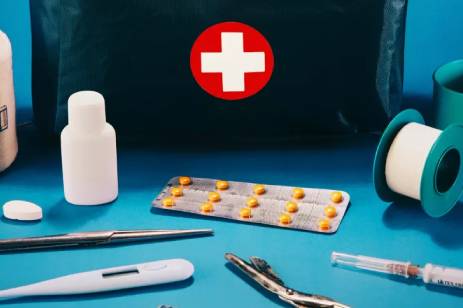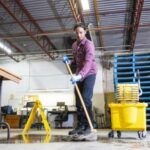First aid and emergency medical care are crucial skills that can make a significant difference in emergencies, potentially saving lives. Whether it’s a minor injury or a serious emergency, knowing how to provide effective first aid can be vital.
Basic First Aid Principles
Understanding the basics of first aid is the foundation of emergency medical care:
- Assess the Situation: Always ensure the area is safe for yourself and the injured person. Check for hazards like fire, traffic, or electricity.
- Call for Help: If the situation is severe, call emergency services immediately. Provide clear and concise information about the location and nature of the emergency.
- Life-Saving Measures: Know how to perform CPR (Cardiopulmonary Resuscitation) and use an AED (Automated External Defibrillator) in cases of cardiac arrest.
- Control Bleeding: In cases of severe bleeding, apply pressure to the wound with a clean cloth or bandage.
- Treat for Shock: If someone is in shock, lay them down and elevate their legs, if possible, to increase blood flow to the heart.
- Do Not Move the Injured Person: Unless there is immediate danger, avoid moving an injured person, especially if you suspect a head, neck, or back injury.
Specialized First Aid Skills
Beyond the basics, some situations require specialized skills:
- Burns: For minor burns, cool the area with cool (not cold) water. Do not apply ice, butter, or ointments.
- Choking: Learn the Heimlich maneuver to help someone who is choking.
- Poisoning: In cases of poisoning, it’s crucial to know what to do and what not to do. Often, the first step is to call a poison control centre.
- Allergic Reactions: Recognize signs of severe allergic reactions, like anaphylaxis, and know how to use an epinephrine auto-injector.
Importance of Regular Training
- Regular Courses: Enroll in first aid and CPR courses regularly. These skills need refreshing, and guidelines may change.
- Practice Scenarios: Regular drills in different scenarios can prepare you for real-life situations.
Creating a First Aid Kit
- Essentials: Stock your first aid kit with essentials like bandages, antiseptic wipes, adhesive tape, scissors, tweezers, sterile gloves, and a resuscitation face shield.
- Customization: Tailor your kit to your environment and activities. For example, if you’re hiking, include snake bite or insect sting supplies.
Conclusion
First aid and emergency medical care are invaluable skills that everyone should learn. They empower you to act confidently and effectively in an emergency, potentially saving lives and preventing minor injuries from becoming major ones. Remember, the best time to learn and prepare for emergencies is before they happen.
(Visited 37 times, 1 visits today)
[mc4wp_form id="5878"]











 LOOKING FOR A JOB?
LOOKING FOR A JOB?